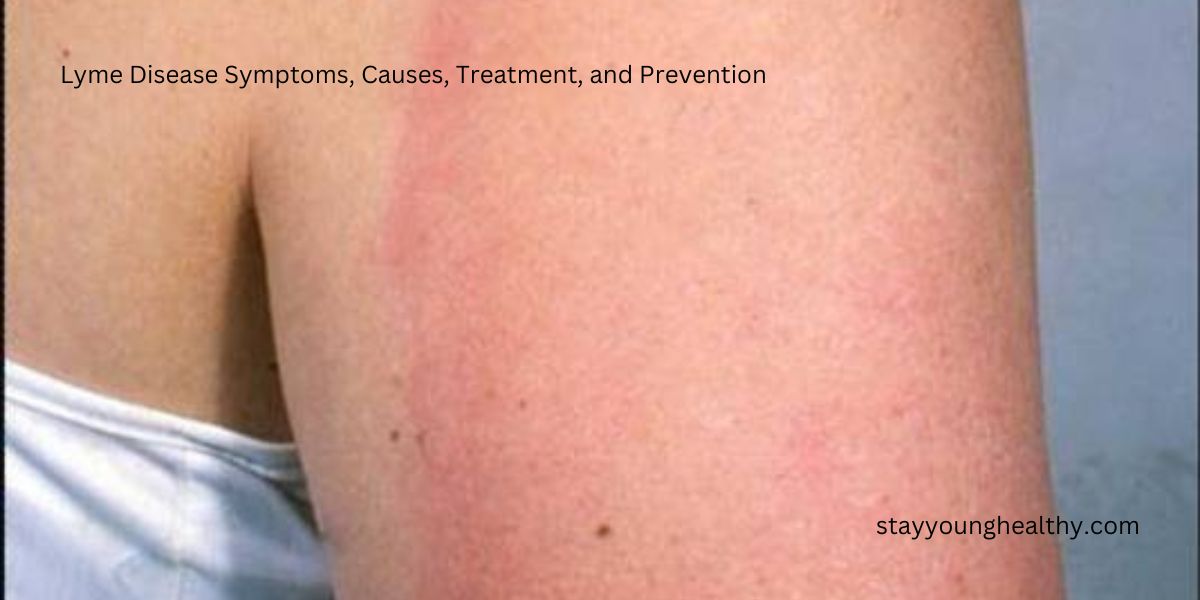Lyme disease is a sickness in the United States that mostly spreads through tick bites. These ticks carry a tiny germ called Borrelia, which can make people sick. When these infected ticks bite, they can cause itchy bumps on the skin, kind of like mosquito bites.
A study from June 2022 found that about 14% of people worldwide might have Lyme disease. This means a lot of people could be affected. The number of people getting sick with Lyme disease is going up every year. In the United States, there are about 30,000 reported cases of Lyme disease each year, but the actual number of people who have it might be even higher.
Lyme Disease Symptoms
The presentation of Lyme disease symptoms can differ between individuals and is influenced by the severity of the infection. Below, you’ll find a list of common signs associated with Lyme disease, ranging from the early stages to the chronic phase of the infection:
- A reddish rash
- Fatigue
- Joint and body aches
- Headache
- Fever
- Stiff neck
- Heart block
- Swollen lymph nodes
- Paralysis of facial muscles
- Abnormal feeling
- Recurring episodes of joint pains or swelling
- Concentration difficulty
- Damage in the nerve system
- Irregular heart rate
- Inflammation in the spinal cord or brain
Causes of Lyme Disease/Lyme Disease Causes
Lyme disease is a sickness you can get from ticks. Ticks are tiny bugs that bite you. In the USA, it spreads when ticks bite you and they have a germ called Borrelia. Sometimes, another type of Borrelia, called Borrelia mayonii, can also give you the disease, but that’s not very common.
When ticks bite you, they can stick to any part of your body like your head, private area, or under your arms. If a tick stays on your body for more than 36 hours, you might get Lyme disease.
When and Whom It Occurs
Any person who lives in grassy or woody areas for a longer period could suffer from the tick bites that can lead him/her to have lyme disease.
Lyme Disease Diagnosis
If you suspect or observe symptoms of Lyme disease following exposure to a grassy area, it’s essential to seek advice from your healthcare provider. Your doctor will perform a comprehensive physical examination, with a particular focus on the affected area. Subsequently, they will engage in a discussion with you to gather information about your medical history and family medical background. Based on their evaluation, your doctor may suggest a blood test. If the initial test results are positive, your doctor may advise further testing as per their recommendation. Conversely, a negative test result indicates the absence of Lyme disease.
Lyme Disease Treatment
Based on the positive blood test results and a thorough physical examination, your doctor may advise the use of antibiotics. If your symptoms persist or worsen after six months of medication, your doctor will then propose the most suitable treatment plan tailored to your specific condition. It is crucial to diligently adhere to your doctor’s guidance throughout your treatment journey.
What to Do If a Tick Bites You
To prevent a tick from firmly attaching to your body after a bite, follow these steps:
- Use a pair of tweezers and carefully approach the tick’s head.
- With confidence and gentleness, grasp the tick with the tweezers.
- Be cautious not to crush the tick’s body as you remove it from your skin.
- Wash the bitten area with soap, such as Dettol, and water.
Lyme Disease Prevention/ How to Protect Yourself from Lyme Disease
You can avoid getting Lyme disease by doing these things:
- Stay away from grassy, wooded, or bushy areas if you can.
- If you’re hiking or spending time in such areas, be extra cautious.
- Wear clothing that covers your skin tightly, and spray insect repellent on your clothes.
- Don’t wear short-sleeved clothes. Instead, wear long-sleeved shirts, t-shirts, and pants. Don’t forget to wear socks and shoes.
- Check yourself and your kids for ticks regularly. If you find a tick, remove it.
- Take a thorough bath or shower after being in grassy, bushy, or wooded areas.
Conclusion
Lyme disease is a health problem caused by ticks. It can be treated if caught early, but if you don’t pay attention to it, it can get worse and take longer to treat. Understanding the symptoms, causes, how it’s diagnosed, how it’s treated, and how to prevent it will help you take the right steps to stay healthy.
Disclaimer – The texts with tips or advice mentioned here, stayyounghealthy.com, are only for information purposes, but not a substitute of medical advice. Before acting on or following any advice or tips, consulting a respective doctor or expert is essential for you. Stay Young Healthy is not responsible if you have any bad impacts on your health.
